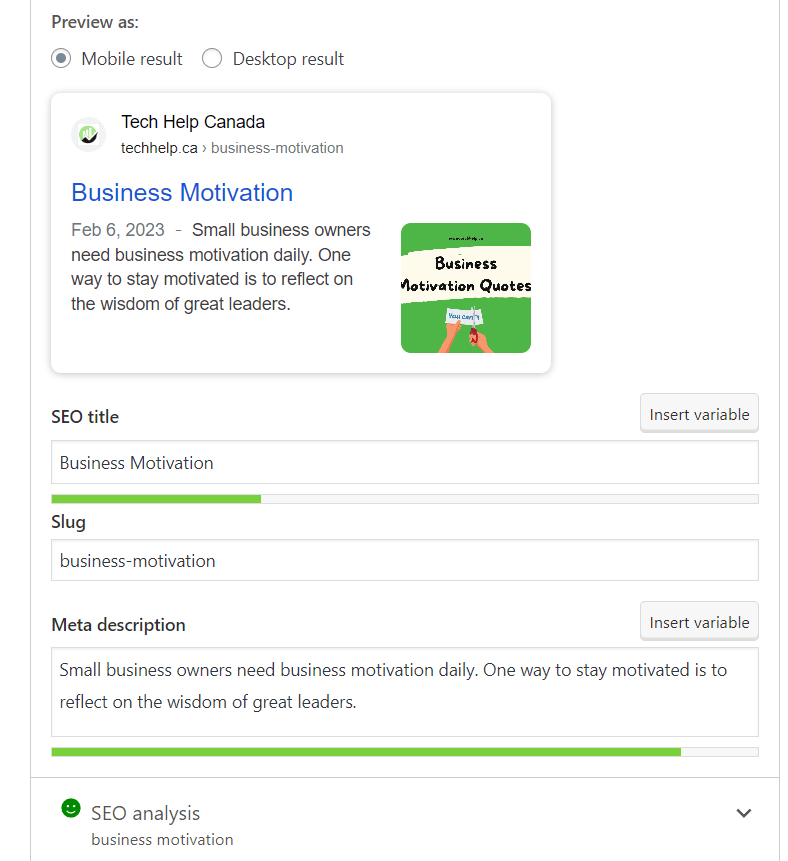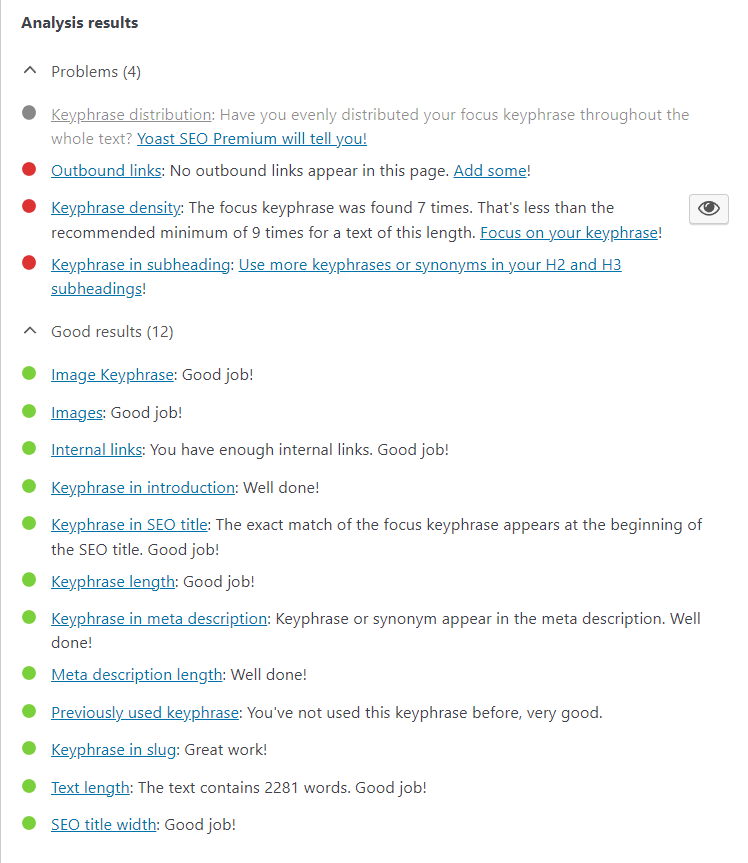Thinking of starting a blog of your own? In this article, you’ll learn how to start a blog for free and become a blogger or build your business. If you’re eager to get started, here’s a quick TLDR (too long; didn’t read) on the free blogging platforms covered in this article.
- WordPress (Recommended; most flexible) — It’s currently the #1 platform for bloggers and offers the most flexibility. As such, this will be the best option for most people.
- Blogger (Layout limitations) — A decent option, but it has usage and design limitations.
- Tumblr (More social than blog) — Operates and functions like a social media platform.
If you’re serious about building a blog that can grow into a real business, check out our full guide on how to start a blog that makes money. It covers everything from setup to monetization.
How To Start a Blog for Free In 5 Simple Steps
If you look up how to set up a blog online, you’ll find tons of information. The sheer number of choices can be overwhelming and make starting a blog seem intimidating.
But the process doesn’t have to be daunting. You don’t have to know everything immediately to succeed.
Most people who start a blog don’t know where to begin or what to do. They don’t know what a domain name, web hosting, content management systems (CMS), or even writing content entails.
Yet, they end up doing well for themselves. So know that it’s much easier than you think.
A blog is an informational website that’s regularly maintained. And many people have built profitable businesses, elevated their careers, improved their writing skills, and more by starting a blog.
People read blogs because they are a great source of easily digestible information. Some blogs focus on entertainment, while others help people learn new things, like the one you’re currently reading.
The conversational tone and how often new content gets published separate blogs from traditional websites.
This article will teach you how to start a blog for free and provide invaluable tips to help you achieve your goals.
1. Give Your Blog A Purpose
Deciding what your blog is about should be the first thing you do before starting a blog. This is not about choosing specific topics but rather deciding on the overall purpose.
Why should people care about your blog?
Writing a content mission statement is the best way to give your blog a purpose. Your content mission statement is your ‘why’ for creating content and should inspire you.
It’s like a compass that steers you in the right direction when choosing topics for your blog.
For example, a content mission statement might be “to help people save time and live better lives.”
2. Choose a Blog Platform
The next step is to pick a home for your blog. Here are the three free options shared earlier in a TLDR.
WordPress is the world’s most renowned and reliable blogging platform. According to W3Techs, it powers over 63% of the World Wide Web.
Part of what makes WordPress great is that it’s open-source. That means the technology is freely available to everyone, allowing for collaboration from multiple contributors.
This makes it easy to find helpful resources whenever need
ed and is why WordPress has a very active support community. You can find answers quickly to any issues that arise.
Plugins are also available to expand your site’s features quickly.
Plugins are software or applications that can enhance the functionality of your blog. Almost anything you want to accomplish on your website has a dedicated plugin for WordPress.
Further, WordPress lets you easily install and switch between different themes. That’s useful when you’ve created tons of content and want to change the website design.
Advantages:
- WordPress’s user-friendly interface makes it easy for beginners to create and manage their blogs.
- There are 1000s of free and paid themes and plugins available for WordPress. These allow you to customize your blog according to your needs.
- WordPress is designed with search engine optimization (SEO) in mind, which can help your blog rank higher on search engine results pages (SERPs).
- It has a large community of users who contribute to the platform by creating new themes, plugins, and other resources.
- Most WordPress themes are mobile responsive, which means they adapt to different screen sizes and devices.
- WordPress supports many multimedia formats, including photos, videos, GIFs, and audio files.
We’ve used WordPress for years here at Tech Help Canada—it powers our own blog. What we like most about it is the full control it gives us, along with the flexibility to grow without switching platforms later.
Disadvantages:
- Although WordPress is generally easy to use, there’s still a learning curve involved in getting started with the platform.
Also worth noting is that there are two ways to use WordPress. The first is through a hosting provider. The second is best suited for tech-savvy folks, which is to download and install it manually on a server.
If you prefer to download and install it manually, you can do so here and make sure you read the documentation. But if you choose to go through a hosting provider, you can get WordPress from any of the following hosting providers.
- WordPress.com (Free) – Creating a free website or blog is easy with WordPress.com. Its hosting platform is not only powerful but also grows along with you. And they provide expert support to help you make the most of your website.
- Bluehost – You can turn your passion into a reality with Bluehost’s managed hosting platform. Each package comes with a free domain name, free SSL, and 24/7 support to ensure you have everything you need.
- Tech Help Canada – With our WordPress Hosting, you can get started with just a few clicks. We provide automatic setup, backups, and software updates, including access to 24/7 award-winning support to assist you every step of the way.
Another free platform that you can use to create your blog is Tumblr, a popular microblogging platform.
Tumblr functions like a social media network that lets you post content. For example, you can earn followers for your blog and follow others. Similarly, the platform includes a privacy feature where you can mark your blog posts as private.
Advantages:
- Tumblr has a simple and intuitive interface that makes creating and managing content easy.
- Tumblr is designed to be social.
- Many free and paid themes are available, allowing you to customize the look of your blog.
- It’s mobile-friendly, so your blog will look great on smartphones and tablets.
Disadvantages:
- While many themes are available for Tumblr, you have limited control over the design of your blog compared to platforms like WordPress.
- It has limited functionality regarding features like eCommerce or advanced analytics.
- Because Tumblr is known as a platform for casual blogging and fandom communities, it may be the least good choice if you’re trying to establish a more professional online presence.
- While you can optimize individual posts for search engines on Tumblr, the platform doesn’t offer many SEO features.
- Tumblr is owned by Yahoo (which was acquired by Verizon in 2017). As such, there may be concerns about ownership or privacy related to your blog content.
Blogger is a dedicated blog-publishing service offered by Google that lets you create multi-user blogs.
When using Blogger, you host your blog on a subdomain through Blogspot, such as yourname.blogspot.com.
The free features are comparable to others, but there are limits to the number of blogs you can create. Free account holders can create up to 100 blogs.
Advantages:
- Blogger is user-friendly and easy to use. Even if you’re not tech-savvy, you can easily create a blog on this platform.
- It offers many customizable templates that you can use to design your blog. You can choose from various layouts, colors, fonts, and more.
- Since Google owns Blogger, it integrates seamlessly with other Google services like Google Analytics, AdSense, and more.
- All templates on Blogger are mobile-friendly.
Disadvantages:
- While many customizable templates are available on Blogger, there are still some limitations when it comes to customization compared to other platforms like WordPress.
- It offers fewer features than other platforms.
- Support is limited if you run into any issues with your blog.
3. Get a Subdomain or Domain Name
A domain name is your blog’s web address, such as blogname.wordpress.com (subdomain) or yourname.com (domain).
Blogging platforms like WordPress and Blogger offer subdomain names for free. But while you can settle for a subdomain, the smart move for serious bloggers is to get a domain name.
If you’re using WordPress for your blog, you can grab one directly from there. Otherwise, you can typically buy one from a domain name registrar.
Additionally, a domain name is central to establishing an online brand. It will be vital to your branding efforts, so choose well. A memorable one will help attract potential readers and ensure people remember your blog.
So take time to produce creative ideas or use tools like Wordoid.com for inspiration.
Here are some additional tips for selecting your blog’s domain name.
Do Your Research
Before settling on a domain name, take time to see what’s available and what others in your space are already using. You’ll want something unique enough to stand out while avoiding names that are too close to established competitors.
Choose a Domain That’s Easy to Spell
The best domain names are intuitive. If someone hears your blog name in conversation, they should be able to type it in without second-guessing the spelling. Avoid tricky or unusual letter combinations.
Aim for Short and Memorable
Lengthy domain names are easy to forget and harder to type. Shorter names tend to be more memorable and look cleaner in URLs and on business cards or social media bios.
Consider Keywords
Including a relevant keyword in your domain can help with search engine visibility and give readers an instant idea of what your blog is about. Just make sure it still sounds natural and brandable.
Use an Appropriate Top-Level Domain (TLD)
Your TLD is the extension at the end (like .com or .org). Match it to your blog’s purpose. For example, use .org for nonprofit causes or .edu for educational sites. For personal brands, .com is still king.
Try Different Extensions
If the .com you want is taken, don’t panic. There are newer extensions like .blog, .co, or .online that might suit your brand even better, and they’re often easier to get.
Use Hyphens Carefully
While hyphens can make long domain names more readable, they also introduce more chances for typos. Use them sparingly and avoid multiple hyphens. Search engines may also treat heavily hyphenated domains as lower quality.
Use Real Words
Domains made of actual words are easier to say, remember, and type. Avoid confusing strings of letters or numbers unless they’re part of your brand identity.
Double-Check Spelling
Typos in your domain can hurt your credibility and confuse visitors. Double-check everything before registering — and consider asking a friend to review it with fresh eyes.
Stay Away from Trademarks
Avoid names that are too similar to existing trademarks or popular brands. This can lead to legal trouble and get your domain taken down. Do a trademark search if you’re unsure.
Check Social Media Availability
Ideally, you’ll want matching usernames on major platforms like Instagram, Twitter, and YouTube. Consistent branding across your domain and social handles makes it easier for people to find and trust you.
Protect Your Brand
If you’re serious about blogging long-term, consider buying common misspellings of your domain or nearby alternatives. This helps protect your brand and ensures you don’t lose traffic from minor typing errors.
4. Select a Great Blog Design
Your blog design (also referred to as the theme) needs to be aesthetically pleasing, user-friendly, and match the attitude or personality of the target audience.
All the free blogging platforms shared earlier come with several pre-set themes. However, WordPress has the most comprehensive selection.
Here are some tips for selecting a blog theme.
Try Different Themes
Before you hit “publish,” explore a handful of themes. Compare layouts, feature sets, licensing costs (one-time vs. annual), and how actively the developer pushes updates. A well-maintained theme will spare you the headache of a full redesign or security scramble later.
Check Reviews
User reviews are gold. Scan for comments on load speed, ease of customization, compatibility with popular plugins, and how quickly the developer responds to support tickets. Real-world feedback surfaces hidden drawbacks that screenshots can’t show.
Consider Your Content
Match the theme to what you’ll actually create. Photographers need bold gallery grids; tutorial bloggers may favor clean typography and a sticky table of contents. When form follows function, your posts shine and readers stay longer.
Check Mobile Friendliness
Over 60% of web traffic comes from phones and tablets, so mobile responsiveness is non-negotiable. Look for themes that not only resize gracefully but also score well on Google’s Core Web Vitals (especially Largest Contentful Paint). A fast Largest Contentful Paint means your theme loads key content quickly, which improves user experience and reduces bounce rates — both of which signal quality to search engines.
Look for Customization Options
A good theme lets you tweak colors, fonts, and layout widths without wrestling with code or bloating your site with heavy page builders. Flexibility means you can evolve your brand without swapping themes every year.
Think About Page Speed
Speed equals retention. Choose a theme that loads lightweight CSS and minimal JavaScript, plays nicely with caching plugins, and avoids oversized image assets. Faster pages keep readers engaged and boost SEO.
Test the Live Demos
Never rely on mock-ups alone. Click through live demos, open sample posts, test navigation menus, and resize the window to see how elements shift. If a demo feels clunky, your real site will too.
5. Promote Your Blog
A common mistake new bloggers make is not promoting their blogs. So once you start blogging, promote your blog content.
Here are some tips for promoting your blog.
Share Your Posts on Social Media
Turn every new article into a social post. Tailor the caption to fit the platform’s style—for example, an eye-catching graphic for Pinterest, a short hook plus link for X/Twitter, or a carousel on Instagram. Consistent sharing keeps your blog top-of-mind and attracts followers who prefer bite-sized updates.
Create a Blog Newsletter
Email is still king for audience loyalty. Offer a simple lead magnet (e.g., checklist, mini-ebook) to boost sign-ups, then send a brief weekly digest that links back to your newest or best-performing posts.
We’ve found that even a simple weekly roundup email helps keep our audience engaged, and it’s been one of the most effective ways to build long-term traffic. Subscribers become repeat visitors and often your first buyers.
Engage in Blogging Forums
Join spaces like BlogEngage, ProBlogger, or relevant subreddits. Answer questions, give feedback, and only share your links when they genuinely help the thread. This “help first, promote later” approach earns trust and drives highly targeted traffic.
Submit to Online Directories
Free blog directories such as Alltop and Blogarama can bring steady referral traffic and a bonus backlink. Choose the most relevant category and write a punchy description to stand out in crowded lists.
Participate in Niche Communities
Facebook and LinkedIn groups are digital watering holes for almost every topic. Show up regularly, add value to discussions, and share your own articles sparingly—ideally when they solve a question another member just asked.
Guest Post on Other Blogs
Pitch complementary sites in your niche and propose a topic their readers will love. A well-placed guest article exposes you to a fresh audience and earns an authoritative backlink to your blog.
Collaborate With Influencers
Reach out to micro-influencers (5k–50k followers) for joint content: co-written posts, live Q&As, or social takeovers. You both gain exposure, and their endorsement lends social proof to your brand.
Add One-Click Share Buttons
Remove friction by embedding share buttons above and below each post. When readers can promote your article with a single tap, your reach multiplies organically.
Translate Key Posts
If you notice traffic from non-English regions or cover topics with global appeal, consider offering Spanish, French, or Portuguese versions. Even automated translations, lightly edited for clarity, can open new markets.
Launch a Supporting Podcast
Record short audio episodes that expand on your blog topics, then mention the full article in the show notes. Podcast listeners often become some of the most engaged readers on your site.
Attend Local Events or Workshops
Industry meetups and small conferences let you network face-to-face. Hand out business cards that feature your blog URL or a memorable QR code to nudge real-world contacts online.
Build Strategic Backlinks
Earn links by creating resources others want to cite—original research, handy calculators, or in-depth guides. High-quality backlinks boost domain authority and, over time, search rankings.
Issue News-Worthy Press Releases
Few bloggers leverage PR. Announce milestones (e.g., 100k monthly readers, a new tool launch) through reputable distribution services. These releases can generate media mentions and diversify your backlink profile.
Start a YouTube Channel
Repurpose blog content into videos, such as slideshows, talking-head explainers, or tutorials. Add the article link at the top of the video description to capture viewers who prefer reading. Use the comments section to pin a CTA and link to your article for even more exposure.
Publish a Free eBook
Bundle several related posts into a polished PDF. Offer it in exchange for an email address or list it on marketplaces like Gumroad.com. Inside, weave natural links back to cornerstone articles.
Interview Subject-Matter Experts
Q&As with respected voices lend credibility and tap into the expert’s existing audience. Promote the interview across both parties’ channels for maximum reach.
Two Important Tools or Plugins for Growing Your Website Traffic
You will need a way to track visitors and simplify the search engine optimization process once your blog is up. And thanks to plugins, you can do those things easily.
In particular, there are two plugins you should install and activate on your website. These are the Yoast SEO plugin and Google Analytics.
Yoast SEO Plugin
Note that Blogger and Tumblr do not support plugins, so this section only applies to WordPress.
Yoast is one of the top WordPress SEO plugins that will help you optimize your website content for better visibility on search engines. It has a real-time content analysis tool that provides feedback on keyword density, readability, and metadata.
Once installed on your WordPress site, you should see something like the following below the blog post editor.

Pay attention to the Analysis Results to optimize your content for search.

The plugin also generates XML sitemaps, sets canonical URLs, offers social media integration, and provides advanced analytics to improve search engine rankings.
Yoast is also a tool we’ve used for years at Tech Help Canada. What we appreciate most is the team behind it—they’re consistent, clearly passionate about SEO, and always evolving the plugin to keep up with changes in the industry. That kind of steady innovation is important for any SEO tool.
Google Analytics (GA)
Google Analytics is a free service that helps bloggers or website owners track and analyze their traffic.
It provides insights into visitor demographics, behavior, and acquisition. You can then use that information to improve user experience, content optimization, and conversions.
Additionally, you can do things like goal setting and marketing campaign tracking. Custom reports and dashboard features allow you to analyze data more effectively.
There are two ways to install GA. You can do it manually and by using a plugin (for WordPress sites).
For the latter, consider the GA Google Analytics plugin. As for the former, here are the general steps.
- Sign up for a free Google Analytics account by visiting analytics.google.com. Once created, you’ll get a prompt to set up analytics for your website (or new property).
- Add the tracking code you received after setting up your website. The code will allow Google Analytics to track visitor data and report it. Install it on every page you want to track. Note: Google will provide simple instructions, so don’t worry about all the details right now.
- Verify your installation. You can do that by opening a page on your site – after adding the tracking code. Then go into the “Real-Time” section of Google Analytics and check if it’s showing any active users on your site. This is important to ensure the code is working correctly.
Worth noting is that you should keep the plugin number for your blog to a minimum. Having too many can significantly decrease your website’s loading speed. Instead, only install the essential ones for the best results.
What Makes Blog Content Compelling?
Now that you know how to start a blog for free, it’s time to dive into high-quality content creation. After all, the content you publish on your blog greatly determines your outcomes.
Compelling blog content has some of the following characteristics.
- Captures the reader’s attention
- Provides value to the reader
- Leaves a lasting impression on the reader
- Has a clear purpose (educate, entertain, persuade, etc.)
- Has a conversational and engaging tone
- Uses storytelling and relatable examples
- Well-researched and informative
- Easy to read and understand
- Offers unique insights or solutions
- Includes visual aids like images or infographics
Incorporate some of these elements into your blog content to stand out.
14 Blogging Tips to Improve Your Writing
Here are some tips for writing better and creating meaningful content.
1. Pick A Good Niche
While having a niche is not required for successful blogging, it can be helpful.
A niche is a specialized focus area or interest within the larger market or industry. You can think of your blog’s niche as its specific topic or subject matter. And the more saturated the industry, the more critical it is to niche down.
For example, instead of writing about “food,” a blogger may focus on “vegan desserts” as their niche. By narrowing your focus, you can attract a more targeted audience and easily establish yourself as an expert.
In addition, consider what excites you when choosing a niche. Writing about what you love can help you stay motivated and engaged with your content.
Try bringing something new and fresh to the table to help you stand out amongst other bloggers.
2. Define the Reader
After identifying your niche, it’s essential to understand the target audience.
For instance, if your blog is about SEO, your readers would likely be businesspeople and other SEOs. Similarly, if you’re writing about parenting, your target audience will be parents.
Tailor your writing style and content to appeal to the people most likely to read and benefit from your blog. Doing so helps maximize engagement and establish a loyal following of readers with similar interests and values.
3. It’s All About the Value
For a blog to be successful, it must provide value to its readers by helping them solve problems. That’s how you build a loyal following over time.
It’s the only way to earn someone’s long-term commitment and engagement. So as you write each blog post, ask yourself whether it offers something of substance to your target audience.
Consistently delivering valuable content will help you establish yourself as a trusted source of information and insights. That will keep readers coming back.
4. Be Original
This is easier than you think.
There are countless blogs out there covering the same topics you’re interested in – however, what will set your blog apart is You. More specifically, your individuality, unique perspective, creativity, and the overall value you bring to readers will set your blog apart.
So infuse every writing with your voice and experiences. Offer a fresh take on familiar subjects and give readers something they can’t find anywhere else.
Also, never be discouraged by the competition. Instead, embrace competitors as an opportunity to showcase what makes you and your blog special.
5. Choose Interesting Topics
Begin by picturing one ideal reader and asking, “What problem are they trying to solve today?” When you frame topics around that real need, your post is instantly relevant. Stay alert to new trends, news stories, and search queries in your niche; timely insights give readers a reason to keep coming back.
Once you know the landscape, look for angles nobody else has tackled. Challenge a common assumption, combine ideas from adjacent fields, or tell the same story through a fresh lens.
Keyword research will show you the phrases people actually type into Google, but don’t rely on data alone. Add color with personal anecdotes and hard-won lessons to make the content uniquely yours.
Inspiration doesn’t stop at blogs. Books, podcasts, documentaries, everyday conversations—even a line from your favorite show—can spark original ideas. The more unexpected the source, the more likely you are to hit on a perspective that stands out and gets shared.
6. It’s ok to Be Yourself
Feel free to share your story. It’s one of the things that make bloggers interesting.
While your niche will ultimately determine what’s appropriate to share, practically anyone has a distinct story worth telling. But keep the narrative more interesting than boring.
7. Be Honest
Honesty is vital in blogging as it establishes trust and credibility with the audience.
When you are honest, your readers will feel more connected to you. They can relate to your experiences more and trust your opinions and recommendations.
Without honesty, readers may lose interest in a blog or even question the blogger’s integrity. So be honest even when you feel it’s a conflict of interest.
For example, recommending a product that you have used before is honest. But, on the other hand, suggesting one you have never used before, yet claiming it’s great, is dishonest.
Being truthful will help you maintain a loyal following and establish yourself as a trustworthy source of information.
8. Don’t Rush Your Content
One of the things people complain about after they learn how to start a blog is the time it takes to create content. So they panic, and some rush to put out as much content as possible.
However, you shouldn’t worry about the time. Instead, concern yourself with writing high-quality content after setting up your blog. Doing so will ensure your blog grows with great content.
If you put out rushed content, you’ll have to go back at some point to fix them, which takes more of your time.
9. Watch Out for Procrastination
It’s easy to fall into the procrastination trap, especially when you don’t yet have a significant readership. Try this mindset shift: tomorrow you’ll be one day older, whether you write or not, so make today count.
Consistency starts with blocking out dedicated writing time each week and treating it like an unbreakable appointment. When we first started our blog, consistency was tough, but sticking to a weekly writing rhythm made all the difference. It’s how we grew our early audience.
Map articles on an editorial calendar to erase the “what should I write next?” question. If a project feels overwhelming, break it into smaller tasks—an outline alone can spark the momentum you need.
Also, before you start writing, remove distractions. Silence notifications, close unneeded tabs, and create a quiet workspace. If websites lure you away, use tools such as StayFocusd or Freedom to temporarily block them.
While writing, ditch perfectionism or don’t make it the focus. Instead, get words on the page first and refine later. If motivation lags or you need an extra push, share your goals with someone who will hold you accountable and celebrate every milestone you reach.
Recognizing even small wins builds confidence and keeps your momentum strong.
10. Have a Vision
You don’t need prior design or writing experience when starting a blog because most people can learn those things. However, what you do need is vision.
So know what you want or have a clear vision for your blog. Then devote yourself to bringing that vision to life through hard work and determination.
Your vision is the foundation; with it, creating something wonderful will be easier.
11. Your Voice Will Come Over Time
Remember that learning how to start a blog for free and writing consistently will make you a better writer. As you hone your craft, you’ll uncover a unique voice—the rhythm, tone, and personality that give your words life and keep readers coming back.
Write in a way that feels honest and natural. Show your personality; it’s what sets your blog apart in a crowded space. Experiment with different styles until you find what feels authentic and effective, and stay open to feedback. Notice what readers enjoy, skip, or discuss—those signals help you refine your voice.
Reading widely also helps. Study writers you admire and note what makes their work engaging. Above all, keep writing. The more you publish, the more confident you’ll become. Voice isn’t discovered overnight; it grows with every post you create.
12. Use ‘You’ More, But Use ‘We’ or ‘Our’ When Appropriate
Using “you” in blog posts can make your content more personal and engaging for the reader. It helps create a connection, making the reader feel like you’re addressing them directly.
This approach helps keep the reader interested and invested in the content.
However, use “we” or “our” when it calls for it or if discussing behaviors. The first-person narrative is less accusatory.
13. Don’t Ignore Negative Criticism, But Ignore Stupidity
You shouldn’t ignore negative criticism altogether.
When receiving criticism, it’s essential to separate constructive negative feedback from negativity meant to cause harm.
Negative criticism can provide valuable insights into areas where you may need to improve, which is good.
In contrast, stupidity or insulting or disrespectful comments do not offer any real value or insight. On the contrary, they can be detrimental if taken too seriously.
In short, filter out unhelpful comments so you can focus on what will help you grow your blog.
14. Research Every Topic Well
Research is an essential component of successful blogging.
Thoroughly researching a topic allows you to provide accurate information and insights valuable to your readers. It also helps establish credibility and authority in your niche.
Research provides a deeper understanding of the subject matter and helps you identify key points that resonate with your audience.
Readers trust bloggers who provide accurate information; if they find errors or inaccuracies in your content, it could hurt your reputation.
In short, you create more informative, engaging, and relevant content through research.
9 Reasons to Start a Blog
If you’re still thinking about it, here are some solid reasons to start a blog.
1. You’ll Improve Your Writing Skills
Writing is about communication. It involves capturing your thoughts and persuading others to understand the views or information you share. And like any other form of communication, writing gets better with practice.
Therefore, blogging can help you improve your writing skills – without even realizing it.
Plus, becoming a better writer has significant advantages that extend beyond blogging. Improved writing skills will help you articulate your thoughts more effectively and connect with people deeply.
Blogging offers an opportunity to enhance communication skills across all aspects of life.
2. You’ll Think Better
The act of blogging (or recording thoughts) encourages introspection and deeper reflection. It prompts you to think about matters critically. It’s a way to explore your thoughts and experiences more deeply.
And as a result of doing those things, you’ll become a better thinker.
Unfortunately, many people are deterred from blogging because they feel there’s nothing to share.
But that line of thinking is flawed. Everyone has something to share. Plus, you can always research topics of interest for content ideas.
Embrace the process of discovery and trust that your voice deserves an audience.
3. You’ll Focus More on Meaningful Things
Filtering things out is necessary when blogging. That’s because capturing every thought or event is impossible, so bloggers must choose what to cover.
It’s an ongoing exercise of selecting the most significant events and important thoughts to articulate.
This curation process can help you cultivate an eye (and mind) for meaningful things in your everyday life. It encourages you to reflect on what truly matters.
Ultimately, blogging offers a unique opportunity to develop your ability to recognize meaningful things in your own life and the world around you.
4. You’ll Gain Healthier Life Habits
Blogging demands time, devotion, commitment, and discipline. And these positive qualities can enrich practically anyone’s life.
That’s why writing can inspire people to adopt new habits, such as waking up early, exercising regularly, etc.
By committing to a regular writing practice and dedicating yourself to self-reflection and growth – you may find new opportunities for personal development and positive change.
5. You’ll Make New Friends
It’s incredible how quickly you can connect with people online. These connections can lead to genuine relationships built on mutual support and a desire to help one another grow.
A world of like-minded individuals is ready to welcome you with open arms. All that’s missing is your voice. So jump in and start making connections.
6. You’ll Make Some Money
Blogging is a fulfilling hobby that doesn’t necessarily need to generate income to be enjoyable. And pursuing money through blogging can sometimes detract from your original joy and passion for writing.
However, there’s no denying that it’s a pretty nice feeling when your blog starts to pay off – whether it’s $10 or $50,000 a year. Knowing that blogging is not only bringing you personal fulfillment but also some financial reward is incredibly satisfying.
Ultimately, the decision of whether to monetize your blog is a personal one. There’s no right or wrong answer.
Some people keep their blogs purely as a creative outlet, while others see them as an opportunity to turn passions into careers. Whatever path you choose, remember that the most important thing is staying true to yourself and finding joy in your actions.
7. You’ll Inspire Others
Blogging can transform not only your life but also that of your readers. By sharing your thoughts, experiences, and perspectives through writing, you’re engaging in a selfless act of service that is accessible to anyone with an Internet connection.
Essentially, you’re giving back meaningfully when you invest time and energy into crafting and offering a blog post for free to the world. Your words may inspire others, provide them with new insights or perspectives, or bring a smile to their face.
Knowing that something you’ve written has positively impacted someone else’s life can be a gratifying experience.
8. Starting a Blog is Free
You can get started with no financial investment today or ever. The top platform for blogging is WordPress, and it’s free. This is what we use for our blog, BTW.
And if you want to take your blog to the next level by grabbing a domain name, it’s still affordable. Domain names cost $10 to $30 annually on average. With that small investment, you’ll have even more control over your blog’s branding.
9. You’ll Build Confidence
Blogging can be a transformative experience that helps you discover newfound confidence in yourself and your unique perspectives.
As you begin to write and share your thoughts with the world, you’ll start to see the value of your voice. Blogging helps you understand that your experiences, insights, and perspectives are meaningful and worth sharing.
Why You May Not Want to Start a Blog
Now that you know how to start a blog for free and why you should do it, this article will only be complete with sharing why you may not want to do it.
Here are three reasons you may want to skip blogging.
1. You’re Doing It for The Money
You can make an excellent income blogging, but it’s essential to recognize that starting a blog with the sole intention of making money is not a sustainable or realistic approach.
If you want to replace your full-time income through blogging, adjust expectations and consider other ways to monetize your passions. For example, a blog can improve how employers view you as a candidate. Similarly, your blog can help you build a writing career.
Also, the most successful bloggers and creatives didn’t start with the goal of making money – they pursued their passions for the love of it.
You should focus on creating content that brings you joy and fulfillment first and foremost.
2. You’re Doing It to Get Famous
While you can have the goal, it’s essential to keep in mind that achieving instant Internet fame is not a realistic expectation.
While some sites may experience rapid growth and success, this is often due to hard work (and luck). Your primary focus should be to share great messages and connect with readers through writing.
Approach blogging with passion and purpose rather than gaining popularity or followers.
Of course, it’s ok to dream big and set ambitious goals for your blog, but it’s essential to remember that success takes time, effort, and dedication.
3. You Think You’ll Get Tons of Traffic Right Away
Don’t be discouraged if you don’t see immediate results. You likely won’t get thousands of readers immediately, and that’s alright. Just remain consistent.
In other words, rather than focusing solely on increasing traffic, prioritize creating meaningful content that helps solve problems for the target audience. Writing from a place of genuine interest and excitement will show in your content and attract an engaged audience over time.
FAQ About Blogging
How Do I Choose a Topic for My Blog?
What Platform Should I Use to Host My Blog?
How Often Should I Post?
Do I Need a Professional Design For My Blog?
Should I Monetize My Blog?
What Are Some Challenges I Might Face When Starting a Blog?
How Do I Make Sure My Blog Is Visible to Search Engines?
How Do I Increase Interaction on My Blog?
Related:
- 20 Easy Blogging Tips to Grow Your Blog Traffic & Revenue
- 2 Unbreakable Rules of Starting a Blog And 5+ Content Creation Tips
- Writing Effective Blog Intro: Capture Readers From the First Line
Create Your Blog

We empower people to succeed through information and essential services. Do you need help with something? Contact Us.
Want a heads-up once a week whenever a new article drops?







